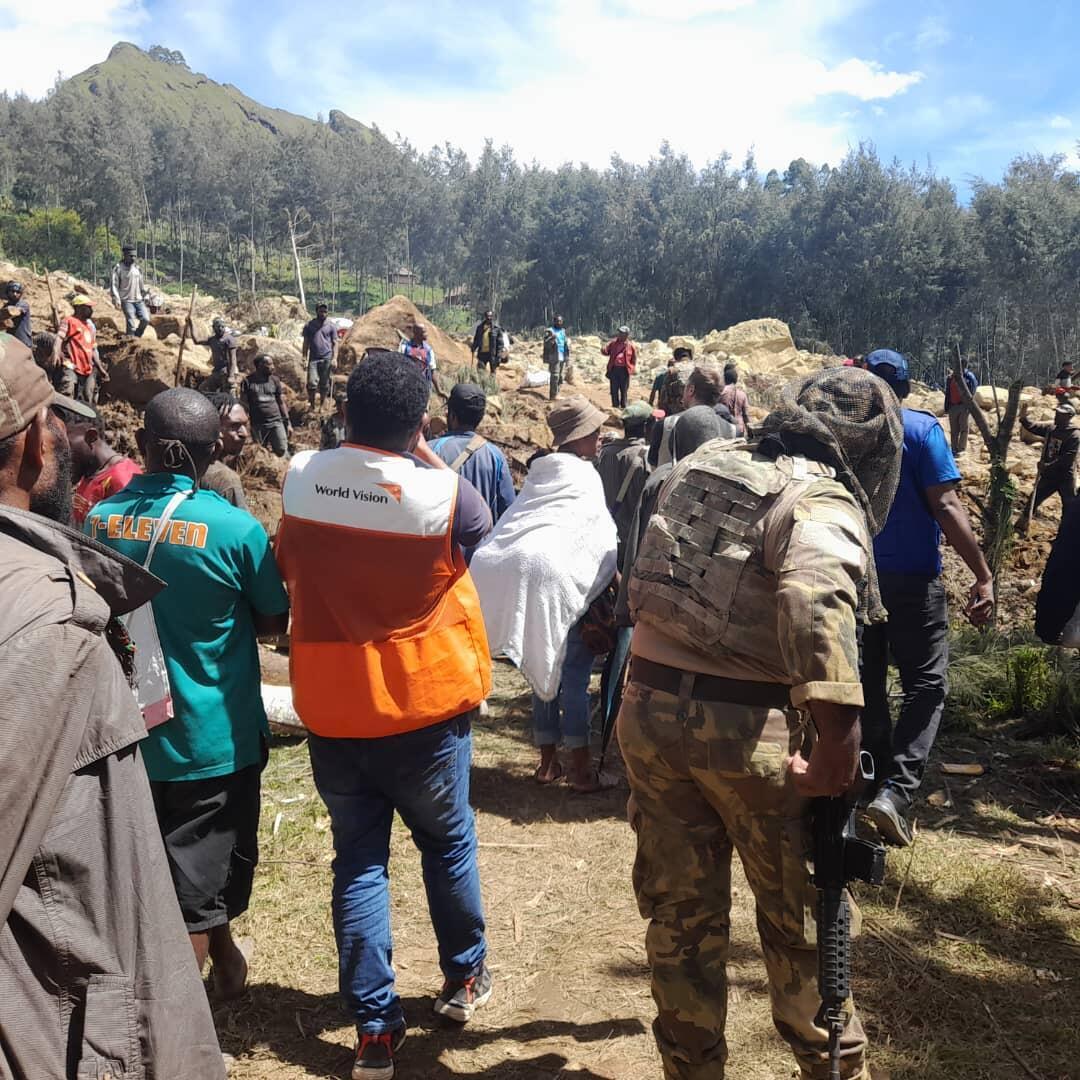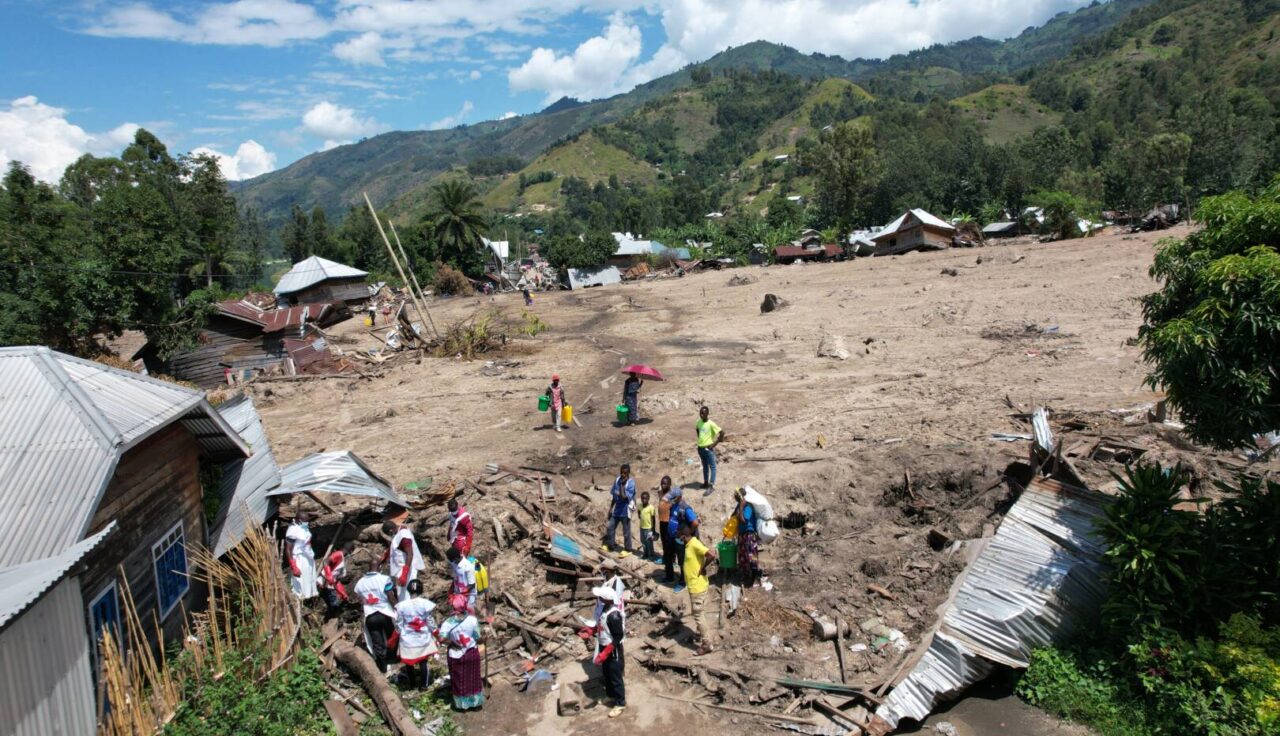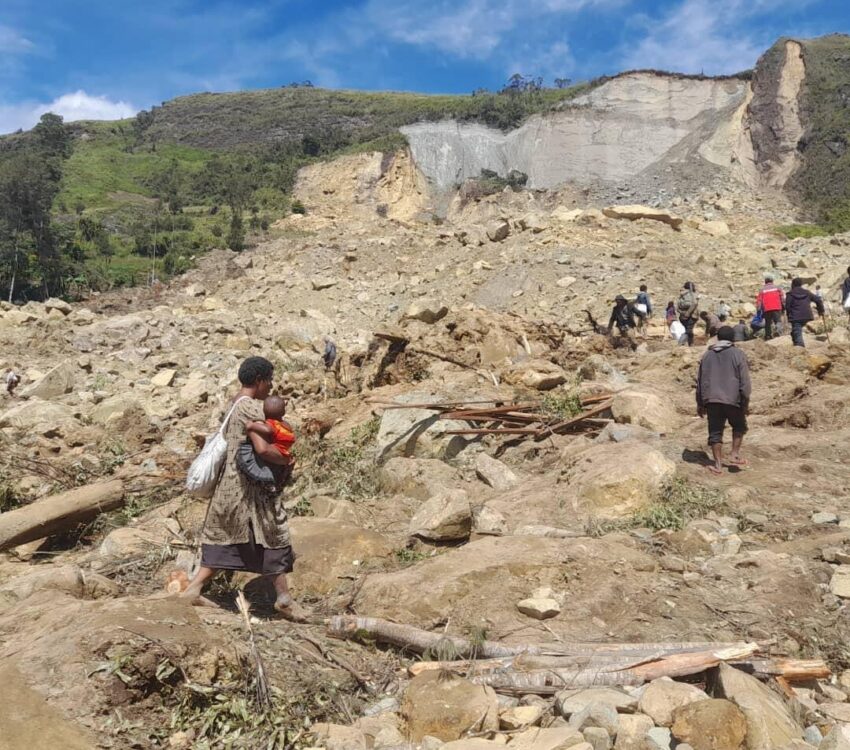A massive landslide in Papua New Guinea’s remote Enga Province has resulted in the loss of 670 lives, burying homes and an entire village. The death toll is expected to rise amid reports of over 2,000 people feared dead, according to statements from a Papua New Guinea government official as reported by the Associated Press. An estimated 7,800 or more are displaced as of May 30, 2024.
Authorities fear a second landslide and potential disease outbreak in the area because of water streams and bodies trapped beneath tons of debris.
At the base of a mountain in the remote Enga Province, the landslide occurred at 3 a.m. on May 24, 2024, catching many residents unaware as they slept. Initially reported as grave, the situation has escalated in severity.
Learn about the landslide in Papua New Guinea, discover key facts about landslide causes and effects, and find ways to support survivors.
Landslides: Facts, FAQs, and how to help
- Fast facts: Papua New Guinea landslide
- What is the current situation of the Papua New Guinea landslide?
- Why did the landslide occur in Papua New Guinea?
- How did the landslide impact people in Papua New Guinea?
- How has World Vision supported people affected by the landslide?
- What are the causes, types, and impacts of landslides?
- Where do landslides commonly occur in the United States?
- What areas are most susceptible to landslides?
- How does World Vision respond to disasters like landslides?
- How can I help survivors of landslides and other disasters?
Fast facts: Papua New Guinea landslide
- On May 24, 2024, a landslide devastated communities in Yambali and Kaundak wards, burying Tulipari village under tons of debris in the remote highlands of the South Pacific nation.
- The Pacific islands of Papua New Guinea are especially vulnerable to natural disasters, including this landslide.
- Landslides are triggered by rainstorms, earthquakes, volcanic eruptions, fires, and human modification of the land.
- Landslides typically form through erosion, saturation of soil or rock, and the force of gravity. Warning signs can often precede these events, such as ground cracks, tree or utility pole tilting, and increased water flow in streams or rivers.
- Landslides are responsible for an estimated 25 to 50 deaths annually in the U.S., with thousands more fatalities occurring in nations worldwide.
- Landslides can travel several miles from their source at 55-100 miles per hour, growing in size as they devour trees, vehicles, and other materials along the way.

What is the current situation of the Papua New Guinea landslide?
Assessing the full extent of the disaster is proving challenging due to the isolated location of the area. Adding to the difficulties, the landslide engulfed a 200-meter (650-foot) stretch of the main highway under 6 to 8 meters (20 to 26 feet) of debris, severely hindering relief efforts.
The magnitude of the disaster is staggering, as described by Chris Jensen, World Vision’s national director for Papua New Guinea. “It’s quite astonishing — a whole mountain literally fell on so many households during the middle of the night,” Jensen told CNN on Monday, May 27, 2024.
Why did the landslide occur in Papua New Guinea?
Authorities have not yet determined the specific cause of the landslide in Enga. However, landslides in Papua New Guinea can happen due to a combination of factors. The country’s geographic location exposes it to natural disasters, including cyclones, droughts, earthquakes, floods, tsunamis, and volcanic eruptions. These events can weaken slopes and destabilize terrain, increasing the risk of landslides. In addition, the effects of El Niño (which brings warmer conditions) and La Niña (which brings cooler conditions) can intensify the situation, triggering more intense droughts and floods.
How did the landslide impact people in Papua New Guinea?
Homes, schools, livelihoods — entire communities — have been wiped away. This disaster has particularly impacted families, including many children, who are now living in exposed areas with limited supplies.
This situation creates a multitude of challenges, from the immediate need for basic necessities to the risk of disease outbreaks due to unsanitary conditions. Immediate needs include food, shelter, blankets, mosquito nets, and cooking tools. Ensuring proper sanitation facilities is also crucial to prevent the spread of disease.
“We are in dire need of a multi-sector response. Our hearts go out to the children and families forced to live in open areas with inadequate shelter. The health and protection risks they face from cold temperatures and unsanitary conditions are deeply concerning,” said Jensen, World Vision’s national director for Papua New Guinea.
How has World Vision supported people affected by the landslide?
World Vision has worked closely with government authorities and humanitarian partners to distribute relief kits, which included essentials like blankets, cooking utensils, and containers, to families affected by the landslide. We also established water and sanitation facilities, including five water tanks, handwashing basins, and emergency latrines, to be installed at the relocation site in coordination with local authorities and aid partners.

What are the causes, types, and impacts of landslides?
Landslides happen when rocks, soil, or debris suddenly move down a hill or slope. Some key points include:
- Causes: Landslides can occur for various reasons, like heavy rain, earthquakes, or changes in water levels. Even human activities like cutting down trees can make slopes unstable as root systems play a crucial role in helping bind soil and support terrain.
- Types: There are different kinds of landslides, including mudslides (similar to fast-moving mud rivers) and rockfalls (when rocks tumble down).
- Impact: Landslides can damage homes, roads, and the environment, and can even be deadly.
Where do landslides commonly occur in the United States?
Landslides happen in all 50 U.S. states and territories, including the Appalachian Mountains, the Rocky Mountains, the Pacific Coastal Ranges, and some areas in Alaska and Hawaii. Any area with weak or fractured materials resting on steep slopes can and likely will face landslides.
What areas are most susceptible to landslides?
Areas most vulnerable to landslides include:
- Steep terrain and the bottoms of canyons.
- Land affected by wildfires.
- Areas changed or modified by human activity, such as deforestation or construction.
- Channels along rivers and streams.
- Regions where surface runoff is directed or where the land is heavily saturated.
How does World Vision respond to disasters like landslides?
World Vision has a presence in nearly 100 countries and responds immediately to humanitarian crises worldwide. In emergencies like the landslide in Papua New Guinea, we ensure people can access critical necessities like food, clean water, hygiene and cooking kits, cash vouchers, and child protection services. We commit to protecting children and other vulnerable people even in the most challenging environments. After addressing immediate needs, we continue to support families and communities as they rebuild.
In 2024, World Vision led 84 disaster responses across 65 countries, supporting more than 35.2 million people in need. This included crises in Ukraine and Sudan, and hunger emergencies in 28 countries suffering the worst effects of a global hunger crisis.


